On December 7th, 1941 the Imperial Japanese Navy conducted a surprise attack on Pearl Harbour in Hawaii which was intended to cripple the US Navy Pacific Fleet and ultimately started the Pacific War. The stunning and brazen attack saw the entry of the United States into World War Two and very quickly Japanese forces had overrun or attacked US, British Commonwealth and Dutch forces across the South West Pacific region (the Philippines, Guam, Wake Islands, Hong Kong, British Malaya, Singapore, New Guinea etc.).
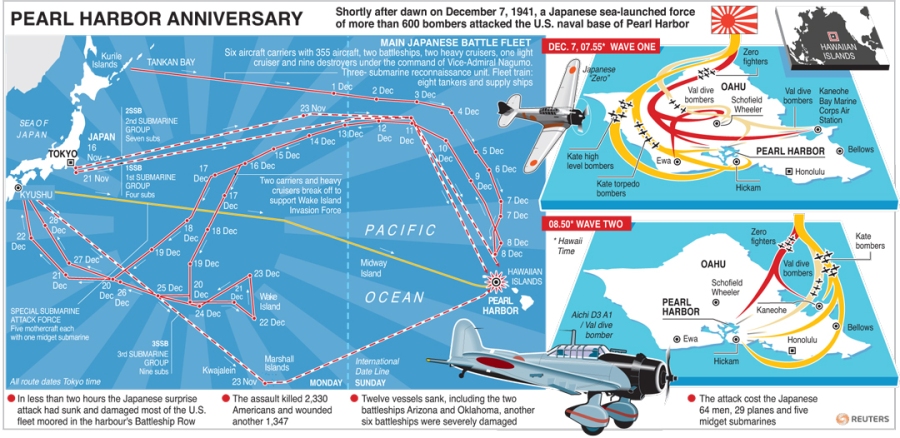

As we know, the attack on Pearl Harbour did not truly cripple the US Pacific Fleet. The Japanese had not taken out the US Navy aircraft carriers stationed at Pearl Harbour, as the carrier fleet were safely out at sea on routine maneuvers and many of the ships that were hit in the attacks were able to be repaired and returned to active duty including most of the battleships (with the major exception of the USS Arizona).
Japanese Imperial Navy Admiral Yamamoto wanted to draw out the US Pacific Fleet and its aircraft carriers in a massive battle in the Pacific Ocean to cripple them once and for all. A Japanese victory would enable them to establish a perimeter across the Pacific to protect their territorial gains (plus planned gains) and hopefully bring a quick peace settlement in the war before the industrial might of the United States could replace the ships lost.
In 1942 the American base on the Midway Islands seemed the perfect place to draw out and defeat the US Navy and also provide a perfect forward base to attack and capture Hawaii just 2,092 kilometres / 1,300 miles further southwest. The US Navy had other plans though…
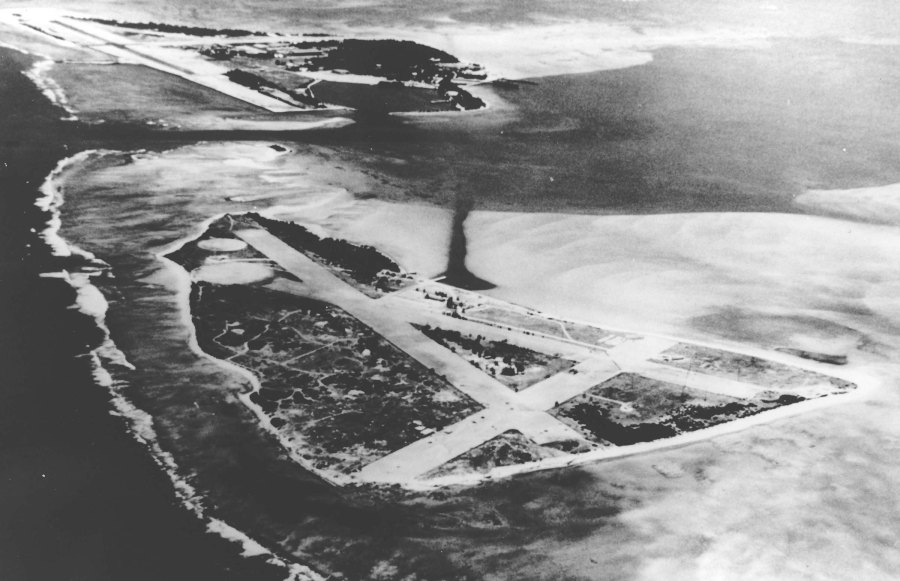
Order of Battle at Midway
Just 6 months after Pearl Harbour the Japanese launched their attack on Midway in June 1942. The intention was to invade the Midway Islands with a complement of 5,000 troops and thus force the hand of the US Navy to send out a fleet including the prized aircraft carriers to retake the islands. They also would invade the western islands of the Aleutian chain off Alaska.
The Imperial Japanese Navy would be waiting for them with a huge combined battle fleet under the overall command of Admiral Yamamoto. This fleet included all their heavy aircraft carriers Akagi, Kaga, Soryu and Hiryu which had participated in the attack on Pearl Harbour (the carrier strike force was under the command of Vice Admiral Chūichi Nagumo), 1 light carrier Hosho (with the battleships), 2 seaplane carriers, over 300 aircraft (97 Aichi D3A “Val” dive bombers, 101 Nakajima B5N “Kate” bombers/torpedo bombers and 105 Mitsubishi A6M “Zero” fighters), 2 battleships, 6 heavy cruisers, 2 light cruisers, 17 destroyers and submarines.
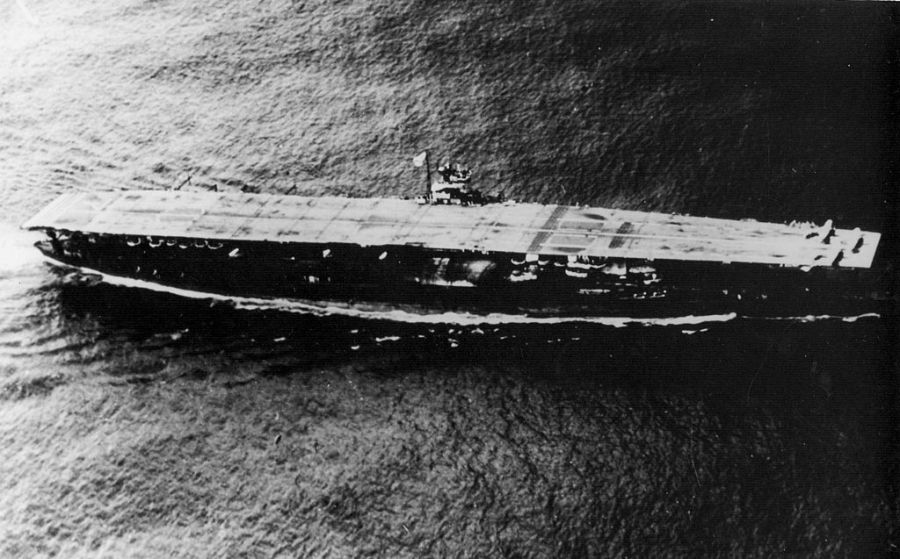
The combined Midway fleet was divided into an advanced expeditionary force of submarines, the Carrier Striking Force (with the 4 carriers under Nagumo plus escorts) and the occupation force (the light carrier, seaplane carriers, battleships, cruisers and transports with the Midway occupation force). There was also an Aleutian screening force and finally an Aleutian occupying force to the north.
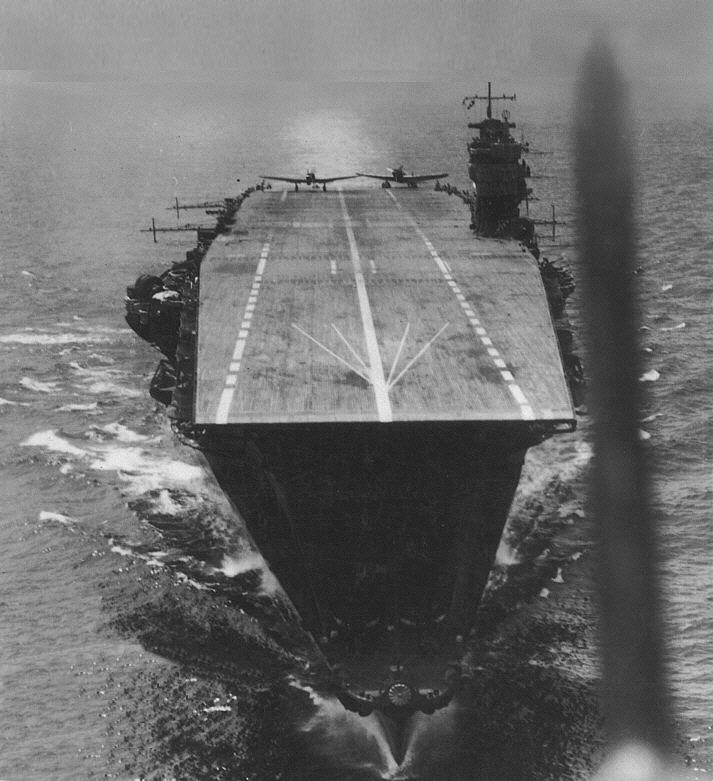
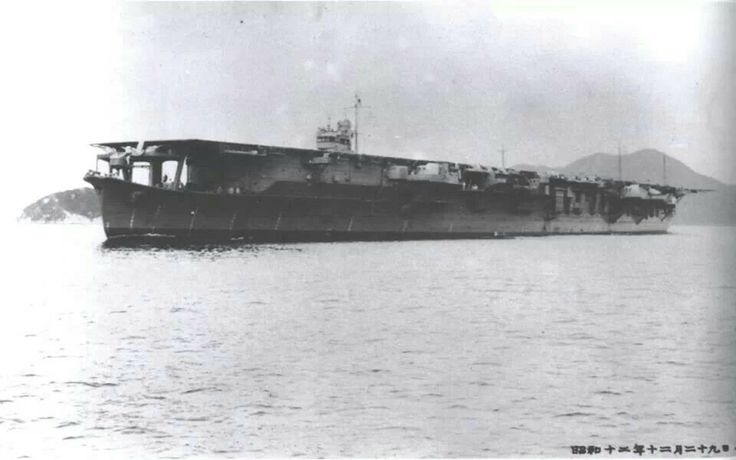
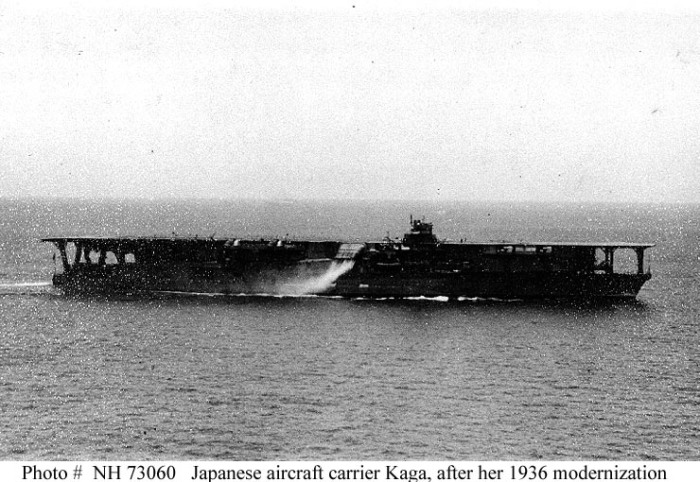
In theory the Japanese plan was a good one but there was one major problem that was soon about to arise. It was unknown to the Japanese but US Navy code breakers in the Hawaii had deciphered at least 90% of Japanese navy coded transmissions on their plans for the attack on Midway. The US Navy knew the Japanese were coming (the target, date and balance of forces were all known by the end of May 1942) and they were ready for a fight!
US Navy Pacific Fleet commander Admiral Chester W. Nimitz was able to place the available aircraft carriers USS Enterprise CV-6, USS Hornet CV-8 and USS Yorktown CV-5 (the latter was hastily repaired in 3 days and put back into service as best as possible following damage during the Battle of the Coral Sea in May 1942) protected by 6 cruisers and 12 destroyers in a position on June 2nd, 1942 where they could surprise the Japanese whilst they were moving into position to attack the islands rather than after the islands had been attacked and invaded. The US Fleet were backed by 233 carrier aircraft, 127 land-based aircraft including USAAF Boeing B-17 bombers and 16 submarines. The US plan was to send out scouts to target the Japanese ships, which were superior in numbers and send aircraft to attack them before they could engage the US fleet.
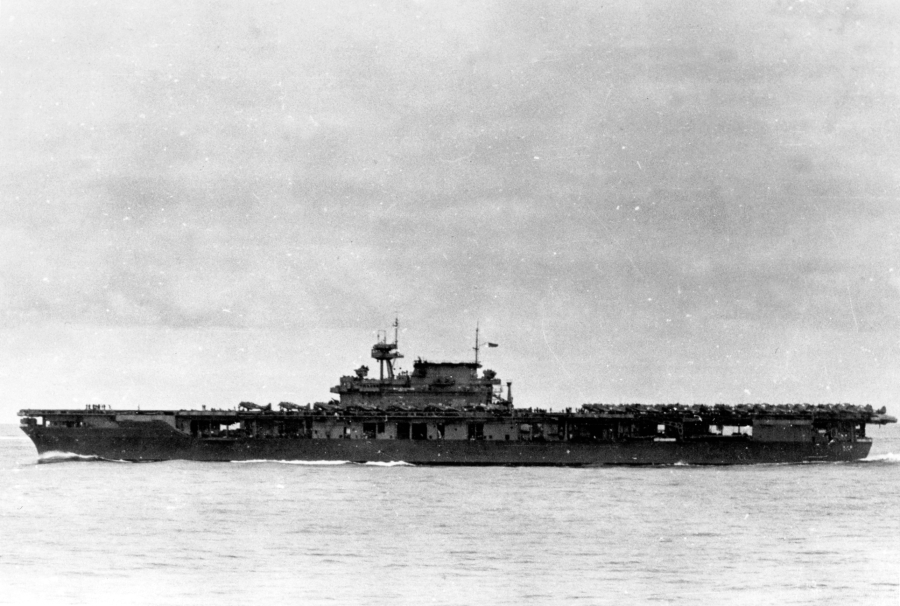
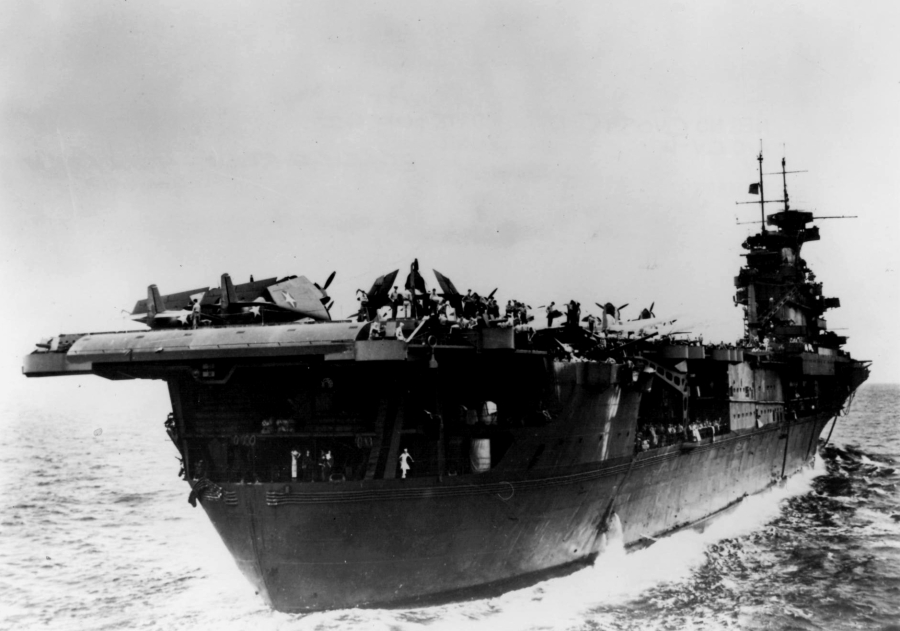
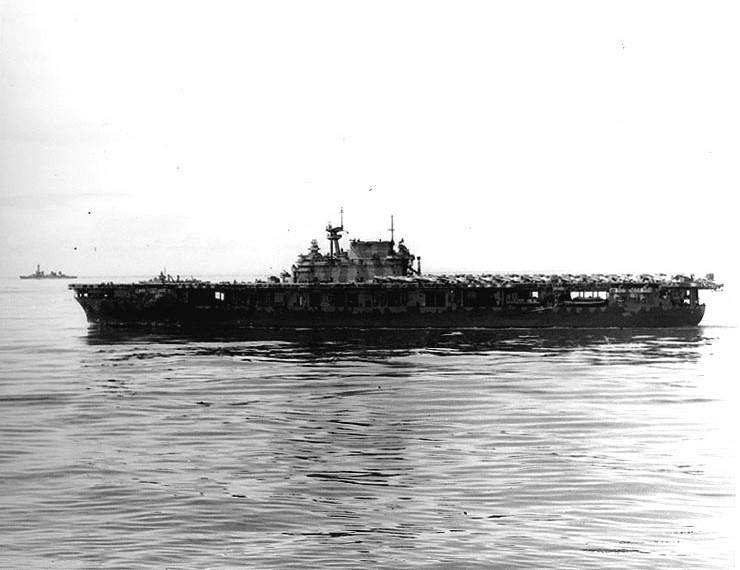
The Battle of Midway
The Battle of Midway erupted June 3rd to 7th, 1942. Initial sightings of the Japanese fleet occurred on June 3rd, 1942 and by first light on June 4th Japanese aircraft started to bomb American targets on Midway but did not hit anything critical and a number of aircraft were shot down during the attack (72 bombers and 36 fighters were launched to attack Midway, the remaining aircraft on the carriers were armed with bombs and torpedoes ready to attack US ships).

The US immediately launched morning counter attacks on June 4th, 1942 with US Navy and USMC torpedo bombers and dive bombers (some of the early attackers lacked fighter protection). 6 of the then new US Navy Grumman TBF-1 Avenger torpedo bombers (introduced in 1942 and blooded at Midway) of Torpedo Squadron 8 (VT-8) were part of these initial counter attacks but were pounced on by around 30 Japanese Mitsubishi Zero fighters and 5 of the 6 Avengers were shot down. The surviving Avenger was badly damaged but pilot Ensign Albert K. Earnest made it back to Midway. His radioman survived but the turret gunner sadly died in action during the battle.
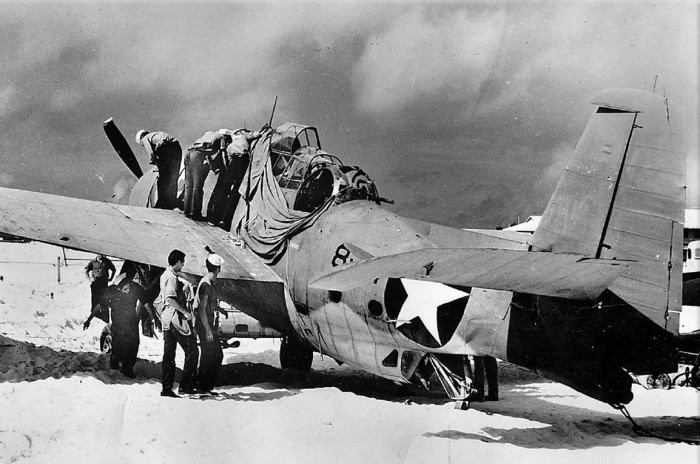
USAAF Boeing B-17E Flying Fortress and Martin B-26 Marauder bombers flying from Midway were also involved in the initial attacks on the Japanese fleet. The B-26 bombers were hastily fitted with a torpedo and with little crew training (this was the first time an Army aircraft had carried a torpedo), 4 brave USAAF B-26 crews set out to attack the Japanese carriers under heavy air attack from Japanese Zero’s and anti-aircraft fire from the Japanese ships. Sadly only 2 B-26 crews made it back to Midway and both aircraft were riddled with hundreds of bullet holes and had rough landings which caused further damage resulting in both being written off!


Initial US counter attacks either missed completely (torpedos missed or the Japanese carriers sharply moved out of the torpedoes path and the B-17 bomb loads were dropped from too high an altitude, giving the Japanese carriers time to maneuver out-of-the-way) or only caused minor damage to the Japanese fleet. This initial lack of success was soon to change in a very dramatic way though.
The main strike force aircraft of the US Navy at Midway were a mix of old and new combat aircraft. The main force included the obsolete Douglas TBD Devastator torpedo bomber (introduced into service in 1937), the highly effective Douglas SBD Dauntless dive bomber (introduced into service in 1940) and the Grumman F4F Wildcat fighter (introduced into service in 1940 – outclassed in performance but a rugged and highly effective fighter in the hands of the right pilot).
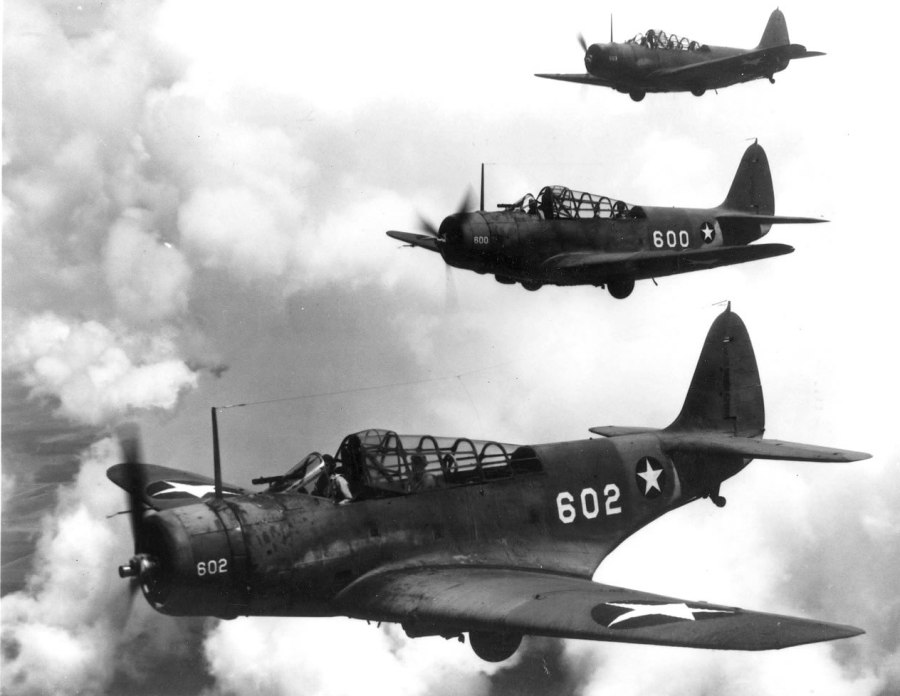

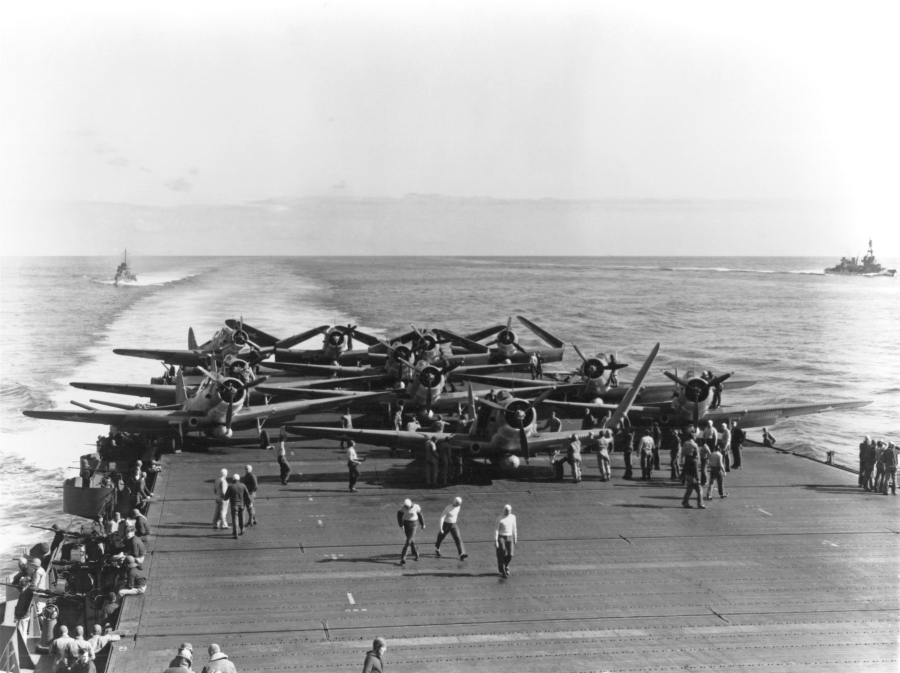

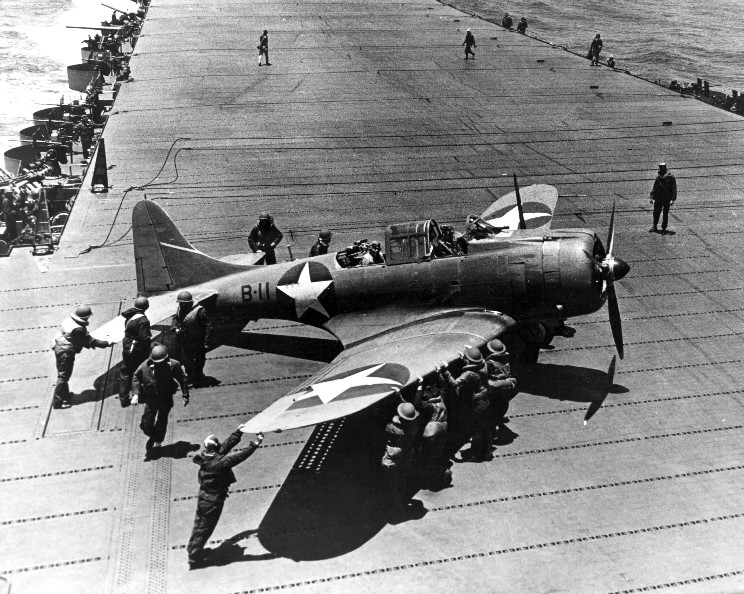
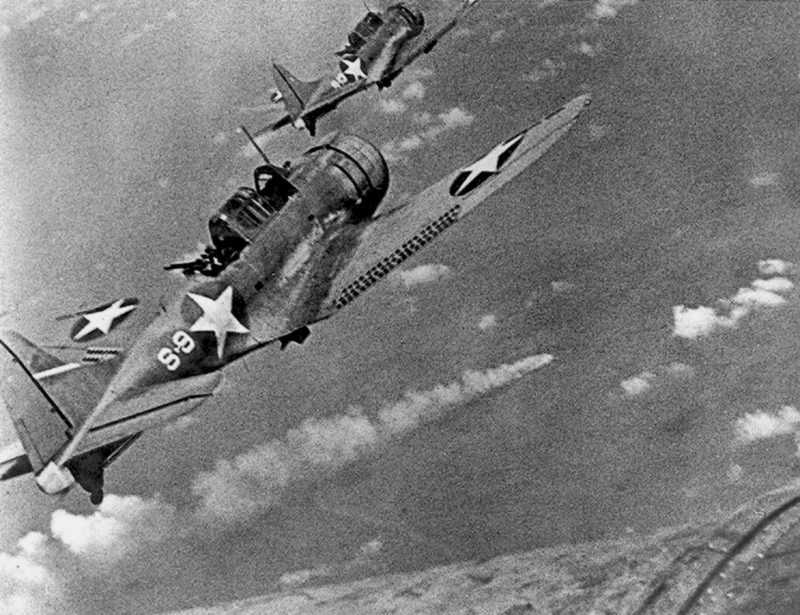


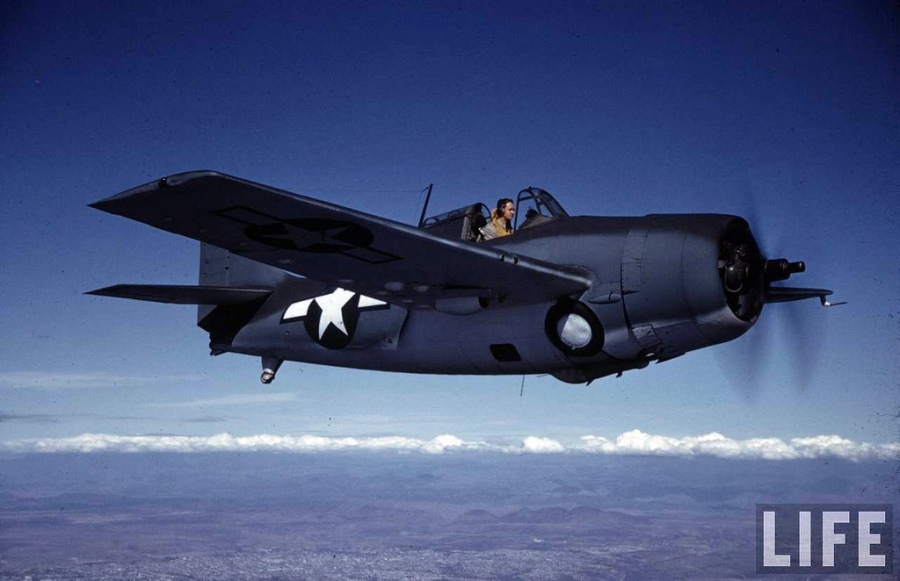
Following the initial raids, a wave of US Navy torpedo bombers became separated and were decimated by Japanese fighters (only 6 of the 41 Devastator’s launched survived and none hit a target with their torpedoes – the aircraft was slow and an easy target) but this created a diversion that allowed the US Navy dive bombers to hit their targets. Despite Japanese Zero fighters being on combat air patrol the US Navy had caught the Japanese in a vulnerable moment as they were in the process of refueling and rearming most of their aircraft on the carriers (they needed to switch over from torpedoes and anti-shipping fused bombs to bombs for land based targets in preparation for a second attack on Midway). In a matter of just 6 minutes on June 4th, 1942, 3 of the 4 Japanese heavy aircraft carriers Akagi, Kaga, Soryu and a heavy cruiser Mikuma were sunk, thousands of crew were lost along with all the aircraft that were aboard. This was the fatal blow to the Japanese that the US Navy could only have dreamed of!
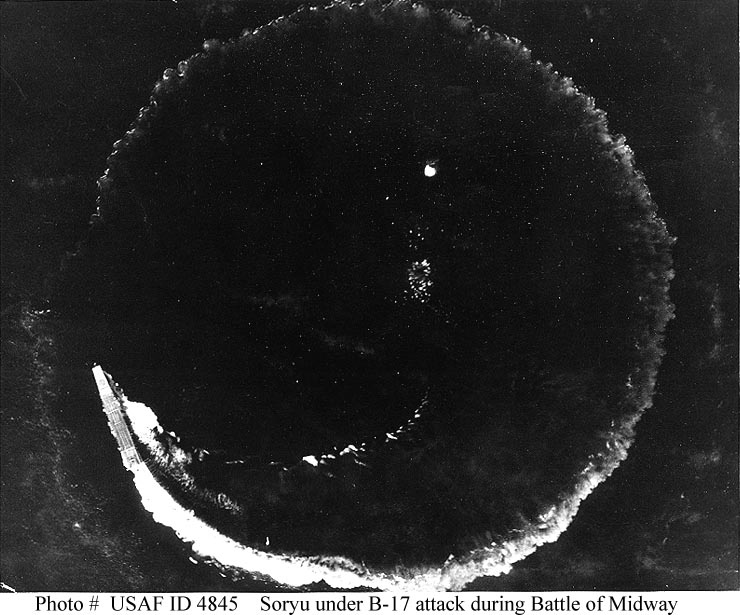
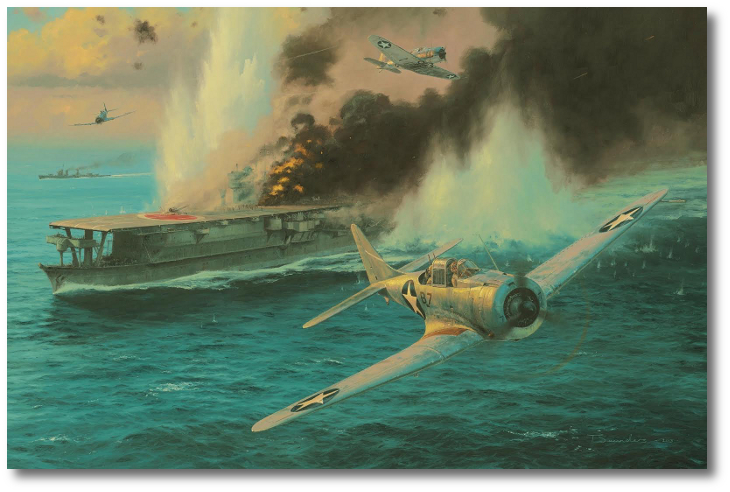
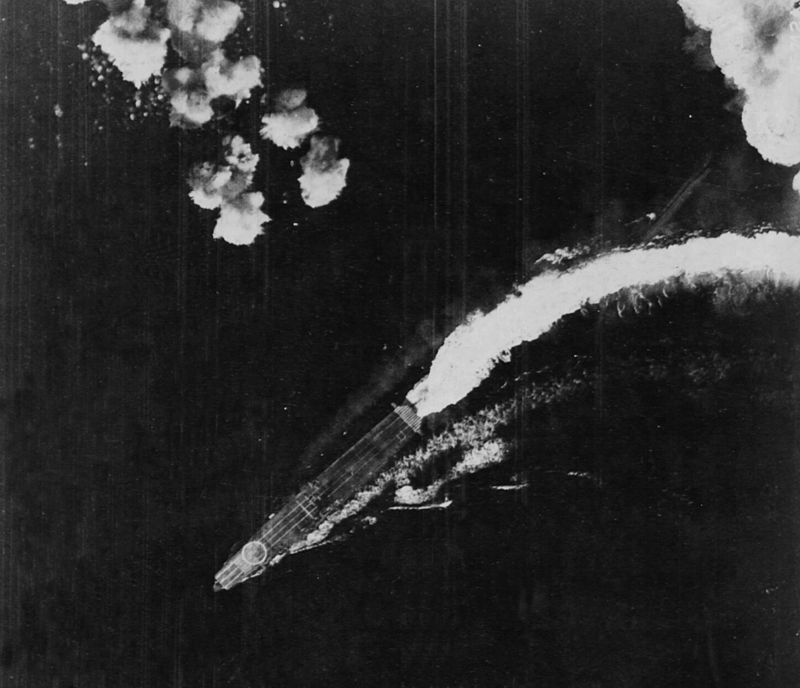
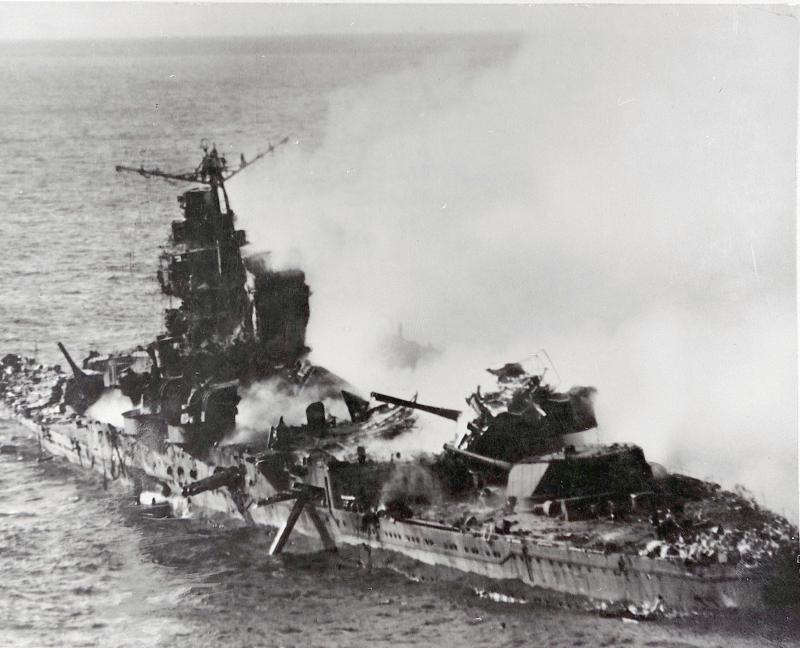
Only the Japanese aircraft carrier Hiryu survived the morning attack and soon launched 18 dive bombers and 6 fighters to counter attack the US Navy carriers. USS Yorktown CV-5 was the most exposed and despite the protective air cover of F4F Wildcat fighters taking down many of the dive bombers, 7 broke through and struck the USS Yorktown with 3 bombs. She was on fire and stopped dead in the water. The crew then worked frantically to get the fires out and the carrier moving again.
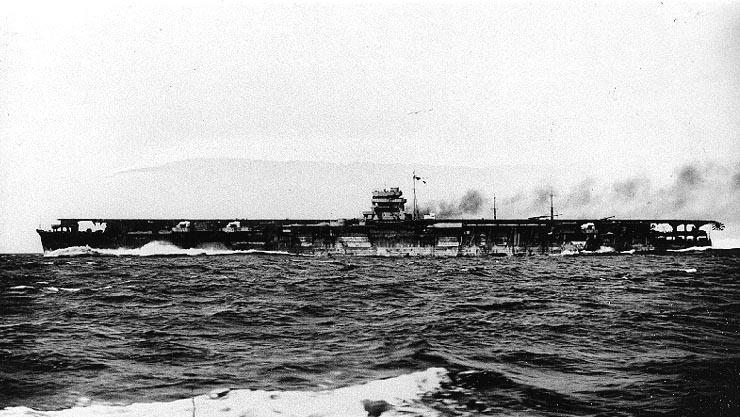
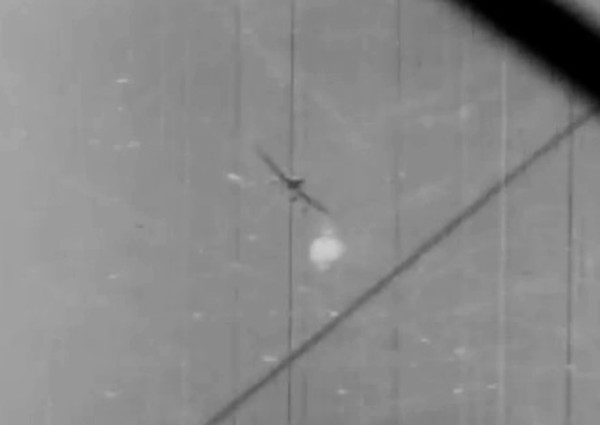
The Hiryu launched a second attack wave of 10 torpedo bombers and 6 fighters to strike the now moving USS Yorktown. Again they penetrated the US Navy air cover and hit the carrier with 2 torpedoes which ripped a gaping hole in her port side and cut all electrical power. Dead in the water once again the USS Yorktown was in trouble and began to list. The crew abandoned ship and on June 6th, 1942 the USS Yorktown was struck again by 2 torpedoes from Japanese submarines, she sank on June 7th.

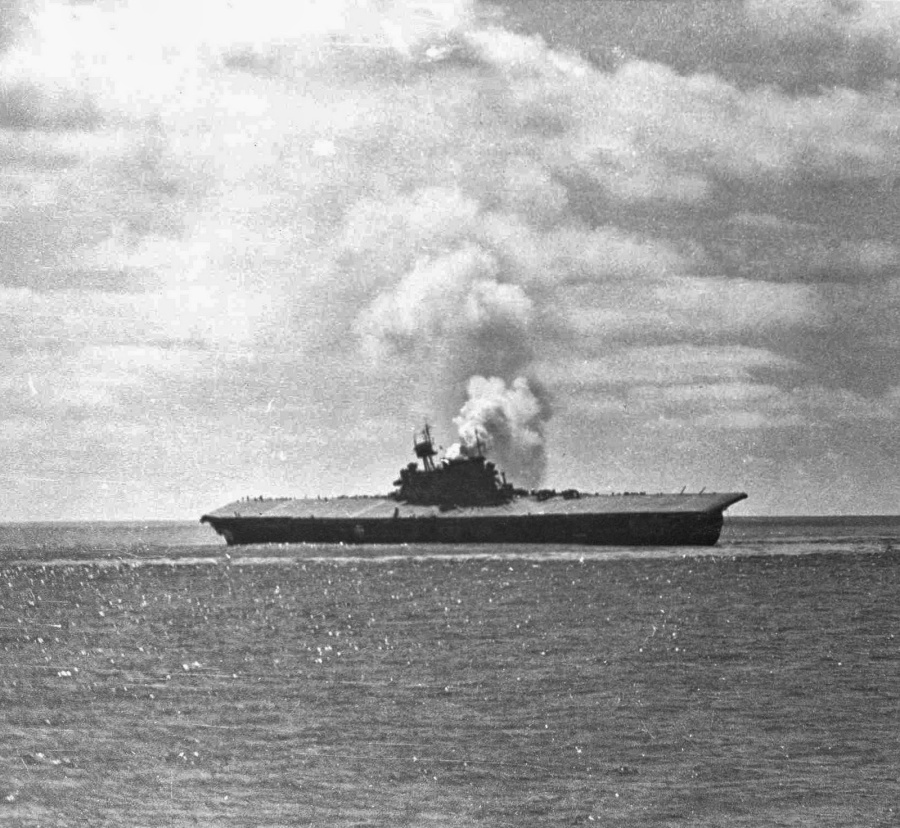
The Japanese had struck back but with the loss of most of their carriers and with most of the remaining aircraft badly damaged from the USS Yorktown raids (the Hiryu had only 4 air-worthy dive bombers and 5 torpedo planes left plus 32 Zero fighters – 19 of her own and 13 survivors from the other carriers that had been airborne when they were sunk), the Japanese Striking Force was in tatters and was ordered to head away from Midway. Prior to this withdrawal the US carriers had launched more aircraft to attack the Japanese and the Hiryu was in their sights.
Dauntless dive bombers were soon overhead and despite some being shot down by Japanese fighters, the Hiryu was struck by 4 bombs and soon ablaze with flames engulfing much of the ship. The carrier was still able to move but the fire could not be fully contained. Later that night the ships engines stopped and the Hiryu was rocked by a large explosion. The ship was abandoned and torpedoed by other Japanese ships, eventually sinking the following day. Despite rescue attempts, not all men had abandoned the ship though and 389 went down with her.
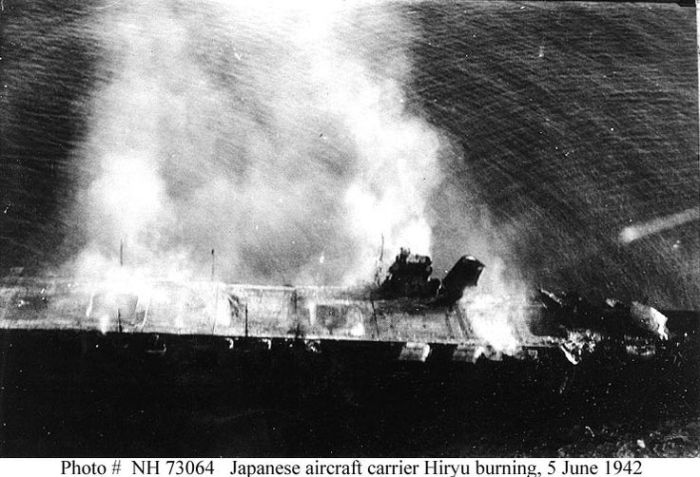
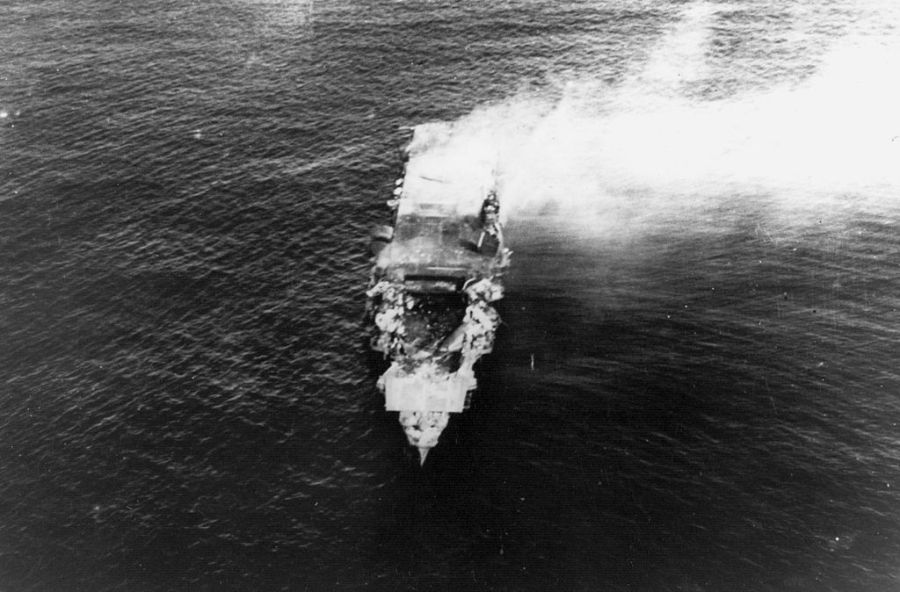
Despite the loss of the carriers, Admiral Yamamoto hoped the US Fleet would pursue his ships where they could be engaged in a night battle with Japanese battleships and be knocked out of action (the Japanese were highly effective at night sea combat). This did not occur though and he officially cancelled the Midway attack.
Up against insurmountable odds but with some luck and plenty of courage on their side, on June 4th, 1942 the US Navy tore out the heart of the Imperial Japanese Navy, who despite having vastly superior numbers of ships and aircraft carriers along with more advanced aircraft were soundly defeated at Midway. The Japanese knockout blow had totally missed and a measure of revenge had been exacted on Japan for the attack on Pearl Harbour!
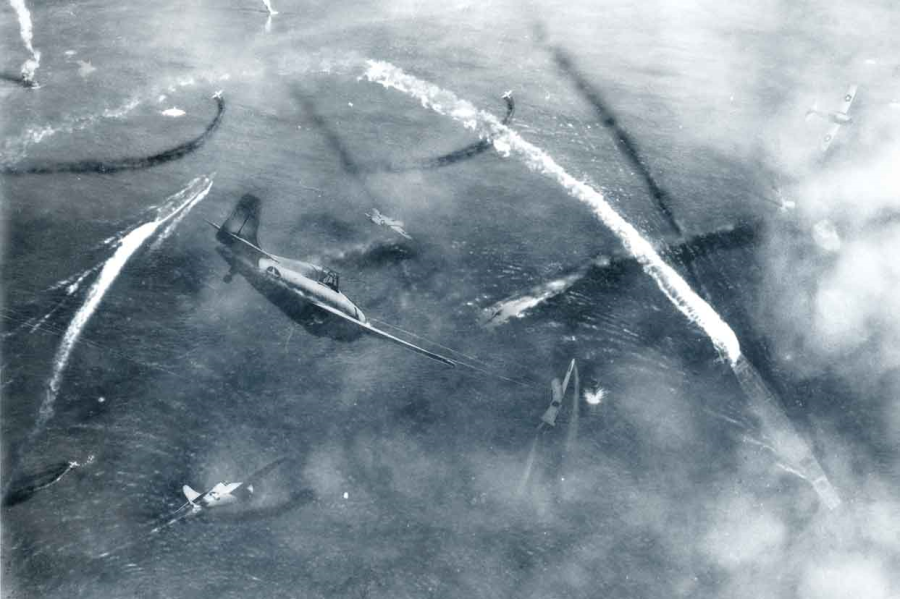
The Battle of Midway turned the tide in favour of the Allies in the Pacific theatre. The Japanese had lost two-thirds of their entire carrier fleet, a vast number of aircraft and many skilled crew members (aircrew, mechanics, sailors etc). From then on the Allies were on the offensive and the battle was a stepping stone to the total defeat of Imperial Japan in 1945 (the Japanese surrendered on August 15th, 1945. Formal Japanese surrender documents were signed on September 2nd, 1945 ending World War Two). Victory at the Battle of Midway did not come without loss for the victor though in terms of men, aircraft and ships (more than 300 seamen, the carrier USS Yorktown, a destroyer and 147 aircraft were all lost in the battle). It was a costly but monumental result for both nations.
USS Midway
In San Diego, California you can visit the retired USS Midway CV-41 US Navy aircraft carrier that served from 1945 to 1991 and was named in honour of the Battle of Midway. Today it is a museum (opened June 2004) and features over 60 aircraft along with The Battle of Midway Experience where you can watch the Voices of Midway movie (the Battle of Midway Theatre opened in January 2015) and view displays on the battle.

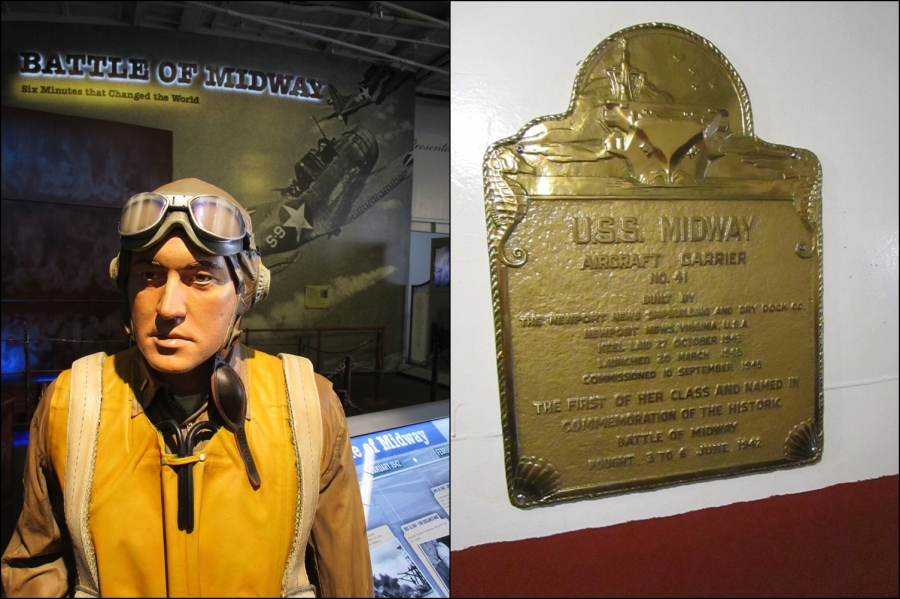
Two important aircraft aboard the USS Midway are a Grumman F4F Wildcat fighter and a Douglas SBD Dauntless dive bomber that are both suspended in mid-air for an impressive presentation. Unfortunately there are no surviving Douglas TBD Devastator torpedo bombers restored in a museum today and there are only a few known wrecks (only 130 were manufactured between 1937-1939 and they were retired from active service following the Battle of Midway in 1942 and replaced by the Grumman TBF/TBM Avenger torpedo bomber. 6 Grumman TBF-1 Avengers as part of VT-8 were present during the Battle of Midway in 1942 but 5 of the 6 were shot down during an early attack on the Japanese fleet. Despite the losses it went on to be one of the most successful torpedo bombers of World War Two. A General Motors TBM example is on display on the USS Midway). These aircraft and their brave crews became the flying legends of the Battle of Midway!

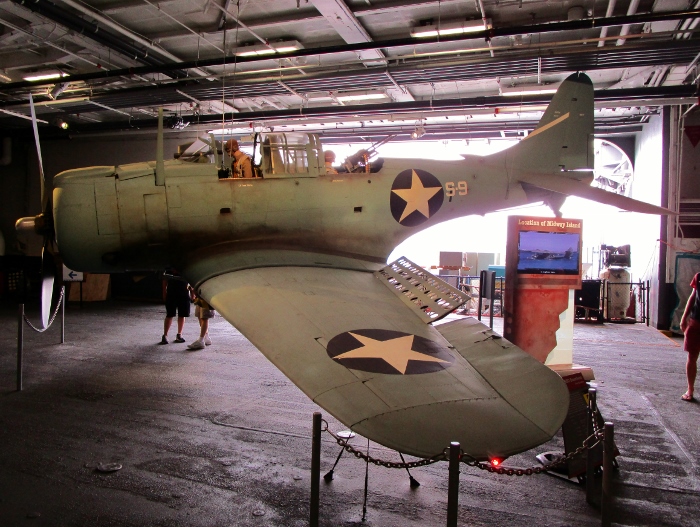
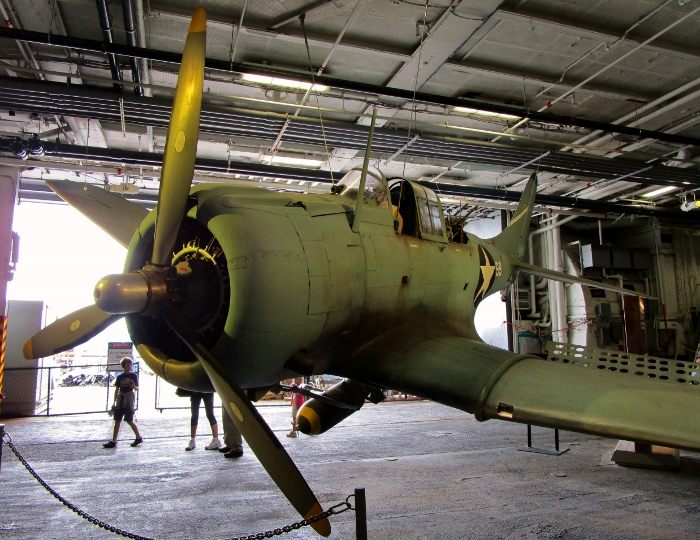
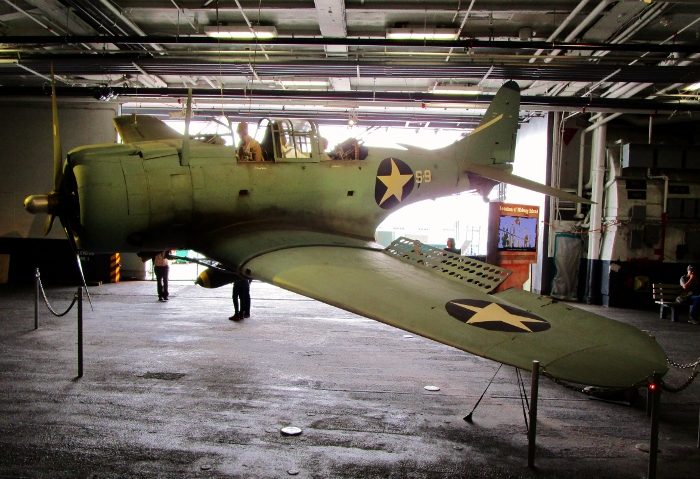
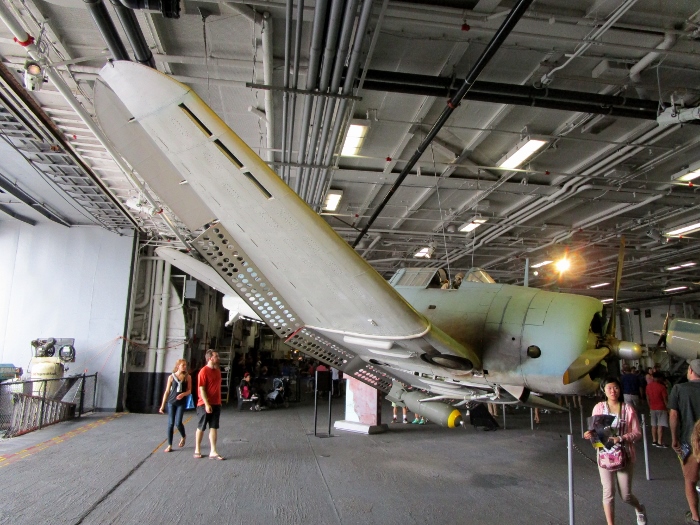
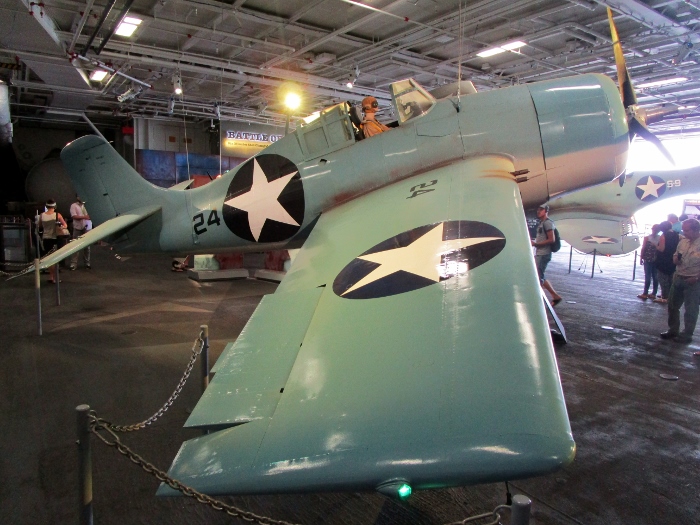

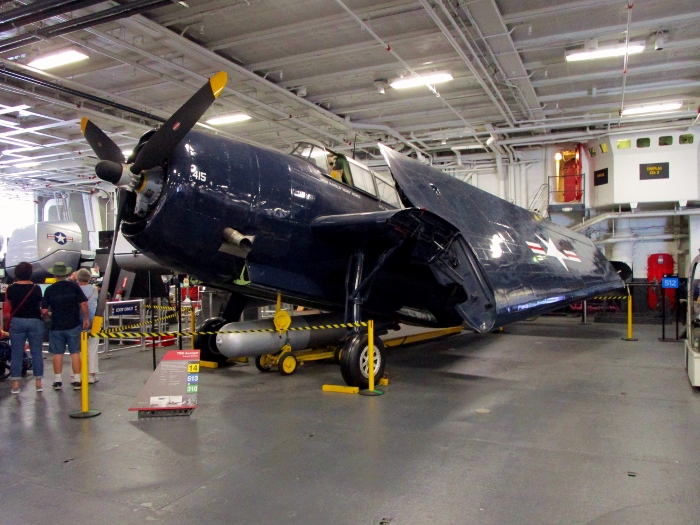
Any visit to San Diego is incomplete without a walk along the waterfront and you cannot help but not miss the mighty USS Midway. If you have the time, go aboard and visit this excellent museum, it is well worth it!
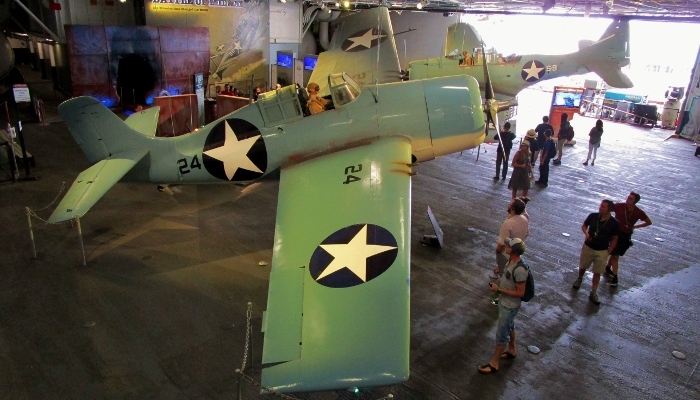
Reblogged this on Lest We Forget and commented:
About the Battle of Midway
LikeLiked by 1 person
Thanks Pierre
LikeLike
Excellent and very informative post.
LikeLiked by 1 person
Thankyou – what a monumental battle it turned out to be
LikeLike
Lots of great info and photos here. We have a story about the B-26 crews that were involved: https://airwarworldwar2.wordpress.com/2014/06/04/b-26s-at-midway/
LikeLiked by 1 person
Thanks – I will add that link to my blog. Good summary of a terrifying mission!
LikeLike
Thanks, glad we could be of help! And you’re right, the mission must have been very terrifying.
LikeLike
Mitsuo Fuchida was aboard the Akagi: “At 10:24, the bridge ordered, by megaphone, the takeoff. The aviation commander waved a white flag. The first Zero picked up speed and rushed forward. At this very moment, a watchman shouted: Dive bombers! I looked up and saw three enemy planes plunging towards our ship. Some gunners managed to open fire, but it was already too late. The silhouette of the Dauntless grew rapidly and suddenly, a number of black objects were detached from their wings. Bombs! They fell right on me! I threw myself instinctively on the deck and crawled behind a protective mattress. At first I heard the terrifying whistling of the airplanes, then a first explosion. There was a dazzling glow and a second explosion, much stronger than the other. A breath of hot air swept through me. A new noise occurred, but more muffled, that of a projectile exploding near the hull, no doubt. Then the gunners fell silent and there reigned a strange silence. I got up and looked at the sky. The enemy planes had already disappeared”.
LikeLiked by 1 person
The photo of 15 TBDs heading into battle never fails to bring a few tears. Great photo!
LikeLiked by 1 person
The Midway Museum now has a Douglas TBD Devastator hanging behind the Wildcat in their Battle of Midway exhibit. It is a full size accurate replica made for the 2019 movie “Midway”, which was sold to the museum after the movie was made, and fully restored by the museum’s air wing volunteers. It is the only place above water in the world where you can view a TBD in person (though it is a replica).
LikeLiked by 1 person
That’s cool!
LikeLike